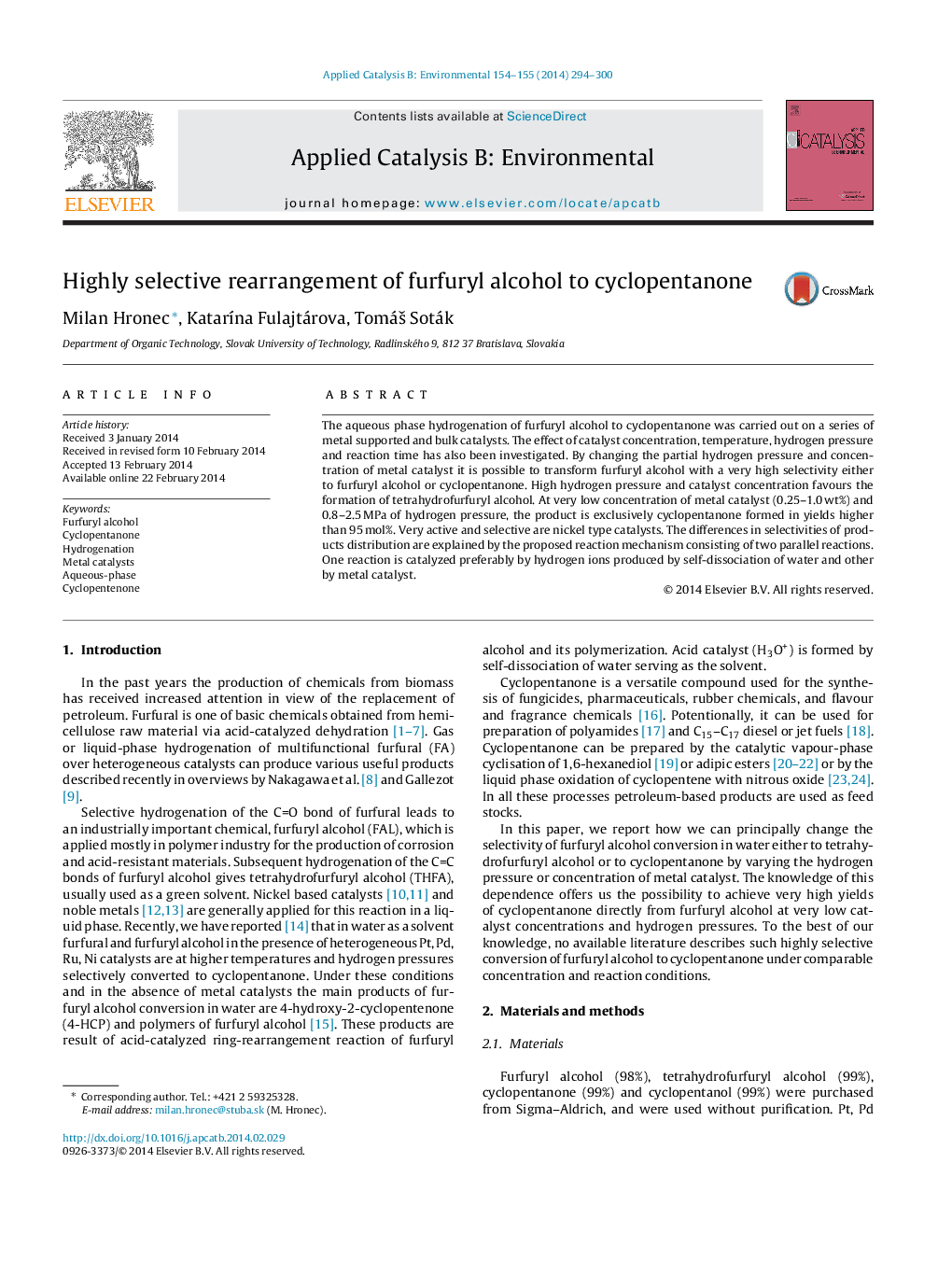| Article ID | Journal | Published Year | Pages | File Type |
|---|---|---|---|---|
| 45067 | Applied Catalysis B: Environmental | 2014 | 7 Pages |
•Selectivity is strongly influenced by hydrogen pressure.•Reaction proceeds at very low catalyst concentration.•Highly active and selective are nickel catalysts.•Higher than 93 mol% yields of cyclopentanone are achieved.•The solvent is water.
The aqueous phase hydrogenation of furfuryl alcohol to cyclopentanone was carried out on a series of metal supported and bulk catalysts. The effect of catalyst concentration, temperature, hydrogen pressure and reaction time has also been investigated. By changing the partial hydrogen pressure and concentration of metal catalyst it is possible to transform furfuryl alcohol with a very high selectivity either to furfuryl alcohol or cyclopentanone. High hydrogen pressure and catalyst concentration favours the formation of tetrahydrofurfuryl alcohol. At very low concentration of metal catalyst (0.25–1.0 wt%) and 0.8–2.5 MPa of hydrogen pressure, the product is exclusively cyclopentanone formed in yields higher than 95 mol%. Very active and selective are nickel type catalysts. The differences in selectivities of products distribution are explained by the proposed reaction mechanism consisting of two parallel reactions. One reaction is catalyzed preferably by hydrogen ions produced by self-dissociation of water and other by metal catalyst.
